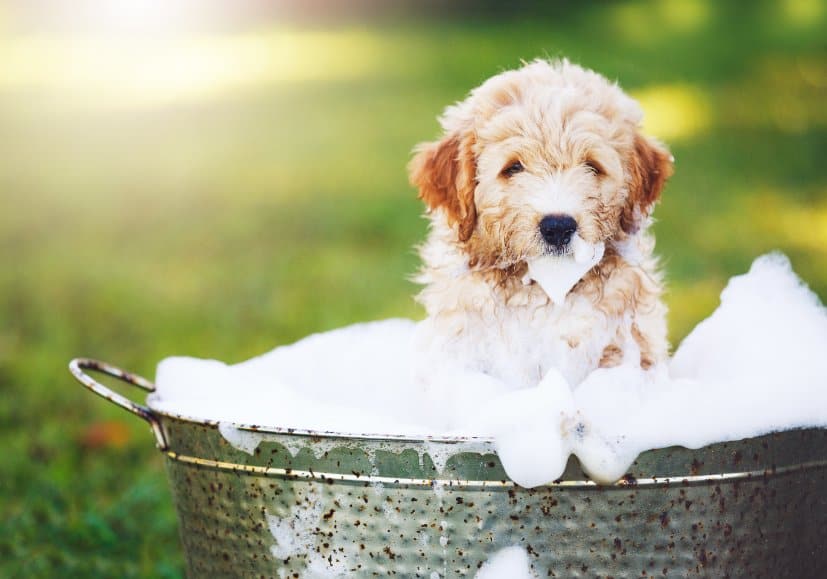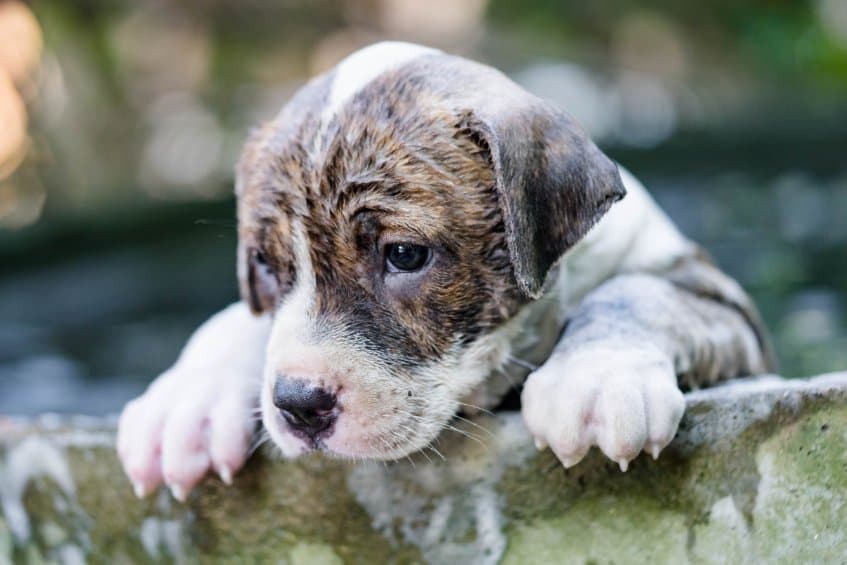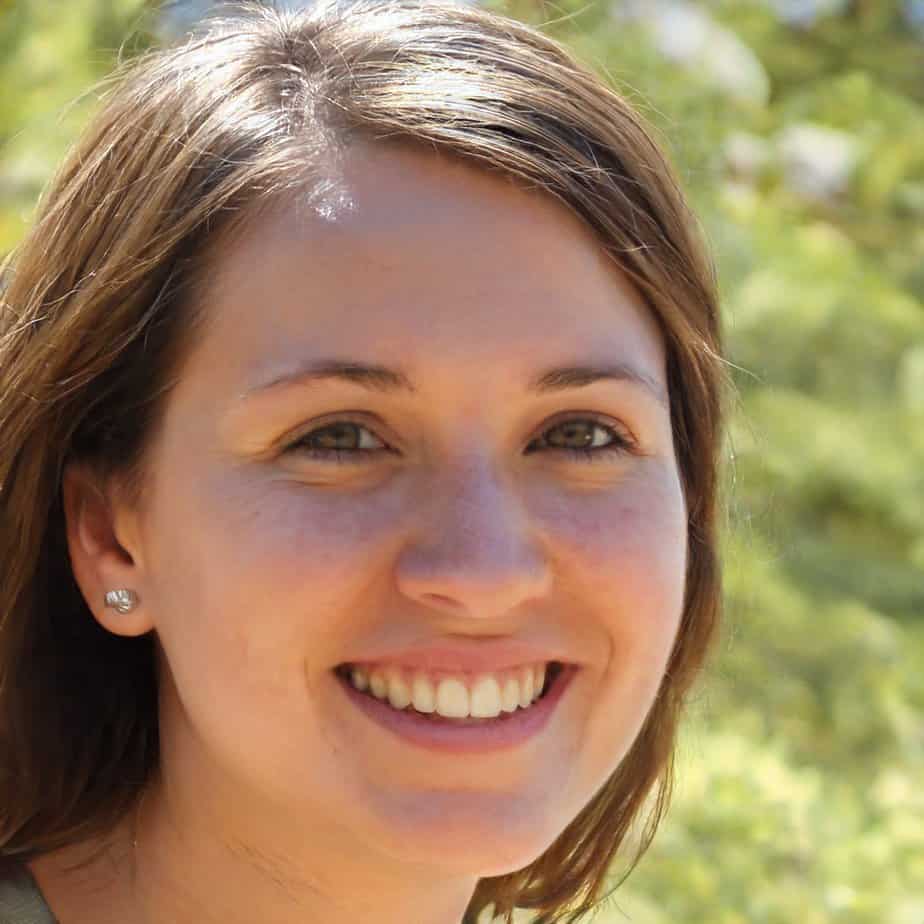
Puppies are small at 2 months old, but they are capable of getting dirty. But, around 2 months old your puppy isn't doing much that could get them dirty. So, can you bathe your puppy at this age?
A dog owner can bathe their 2-month-old puppy, but they should be gentle and careful. Owners should remember that water is loud and scary when filling up the sink or tub, and they should make sure the puppy does not slip and is not submerged in the water. A washcloth bath works great at this age.
As a puppy owner, making sure your puppy feels safe and comfortable with their first ever bath is important to building a trusting relationship with your puppy. Read on below for more information about puppy baths!
At What Age Can I Start Bathing My Puppy?
Puppies are so cute, but owners want them to smell nice too! So, that leads us to wonder; when is it time for their first bath? Well, starting at about 1 1/2 or 2 months old is perfect timing.
Some puppies have their first bath at one-month-old, but this can be too early. People tend to wait to bathe them until after they have had their puppy shots. At that appointment, you can ask your vet when you should bathe your puppy. You can start around that time, right before the appointment, or within a week after the appointment to start bathing your puppy.
What you should know is when you should not bathe a puppy. A general consensus is that you should not bathe a puppy in the first month of its life. Some people go past that to the 6-week mark, and others wait for up to 8 weeks. That is up to you, but waiting until the puppy is at least a month old is a good place to begin.
How Often Should I Bathe My Puppy?

Your puppy will have a different frequency of baths as they get older, depending on their breed and your personal preferences. You might want to bathe your puppy every week, every other week, or once every month before they are big enough to go to the groomers regularly. A good rule of thumb dog owners follow is to wash their puppy about every 6-8 weeks or as needed.
If you have a dog that sheds a lot, but your family is sensitive to their fur, you may want to bathe and brush your dog more frequently so that the shedding doesn't get around your house and make your allergies worse.
Brushing your dog frequently can help make bathing go smoother. It can help prevent ticks and can help their fur/hair be smoother and easier to wash by the time bath time comes around.
How Should I Introduce Baths to My Puppy?
When you give your puppy their first bath, you should have warm water and use a gentle cloth (like a microfiber cloth, not a towel). You can hold your puppy or have your puppy sit on a towel on the counter or floor in front of you and gently clean them.
Your vet can tell you about puppy soaps, but if it is their first bath you might opt for simply using warm water and introducing soap later. When your puppy switches from being indoors all the time to going outside to use the bathroom and play, you can introduce soap for deeper cleaning.
Make sure your puppy won't slip or slide around. If you are filling a tub or sink with water, put a towel or cloth on the bottom of the tub to give your puppy's fur something to grip onto.
How Should I Bathe My Puppy?

We talked about how in the beginning you can use the cloth bath method, but after a few weeks or months of that, they will be big enough for a real bath or for professional grooming. So, how should you do that?
You will want to fill up the tub with warm water. Add soap to it to make it soapy and ready to soak their fur/hair and really clean them. The towel on the bottom of the tub tip above applies here. You may not need this trick forever, but use it while they are young.
You will then start scrubbing their fur. You will want to be gentle, yet thorough. Using your hands or a handy doggy tool, work the soap into their fur/hair and clean all the places that need cleaning, including their paws and bellies.
Be gentle and do not use too much soap when cleaning the face, as you don't want big bubbles to get into their eyes.
If baths are a challenge for your puppy, give them a sense of accomplishment by giving them a treat after their bath. After their bath, you will also want to dry and comb your dog out.
Depending on their type of fur/hair, you may need a different brush or comb than the one you use on another dog, but if you get confused, your vet can give you recommendations. If you take your other dogs to a groomer, ask them what you should get to make the results last longer.
What Will I Need to Bathe My Puppy?
There are some great products you can use to bathe your puppy. After you determine what kind of shampoo and conditioner works best for your dog's fur/hair, go ahead and get that product. Some great brands for dog soap are Arm and Hammer, Burts Bees, Vermont Soap, Paws and Pals, and more.
After getting your preferred soap, you will want to have an old towel ready. If you don't have old towels to spare, new towels will work great. If you want to go the extra mile, getting a dedicated microfiber towel will be wonderful for your dog and will absorb most of the water in their fur. Then, look to purchase a variety of brushes for your dog. You can get rakes, combs, and brushes to help remove loose fur.

Cindy is a prolific writer and online researcher who can't imagine life without dogs. There is scarcely a dog topic she has not researched or written about. Her love for dogs and helping dog parents is evident by the thousands of dogtemperament.com visitors who read her articles monthly. Most of all, each topic Cindy writes on helps forge a stronger bond and understanding between her and her happy Catahoula Leopard Dog Jossie.